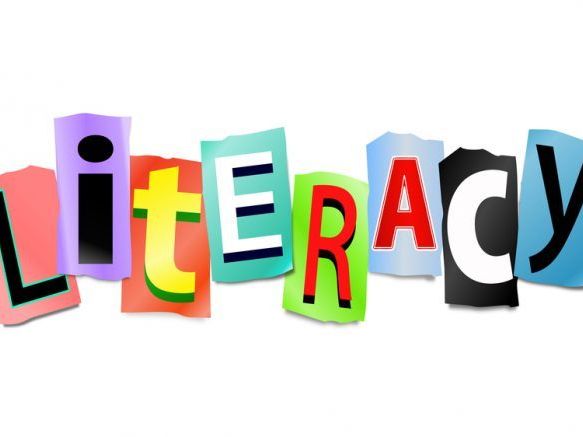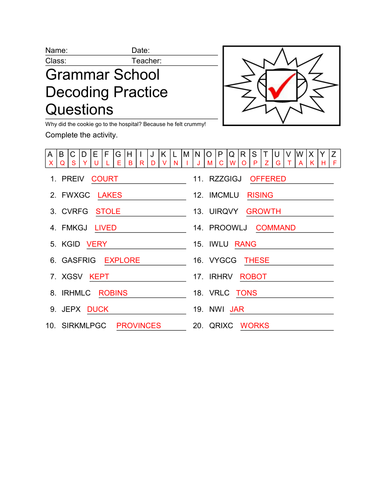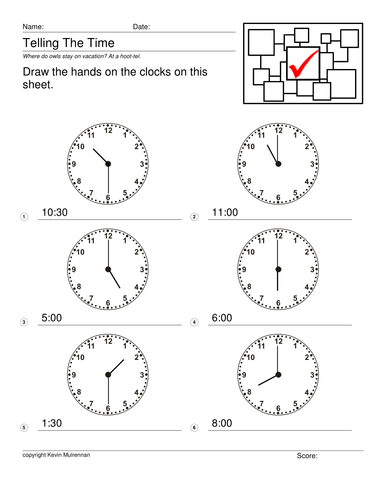406Uploads
123k+Views
41k+Downloads
Math
Sale

Year 6 Maths Numeracy Planning 890 Files 400mb Planning
I’ve put together my planning from a school I taught in.
You get a massive 890 files and over 400mb of planning.
Spread over a number of years, you may wish to form for your own use your own lessons by combining elements of various lessons.
The zip contains the lot. I’ve included a few in the general upload so you can peruse.
Sale

Teaching Resources 50000 Questions Fractions Maths KS2
I have designed 100 worksheets of 12 pages each (50000 questions in total) on fractions. They are suitable for years 5 and 6 i.e. 10 and 11 year olds. They could be used in the first few years of secondary school too, or for adults who need help with Maths. There is a wide range of difficulty. You can dip into the worksheets and pick the ones you like. The further you go into a worksheet the more difficult it is as I have used bigger denominators, mixed and whole numbers, a wider range of numbers etc. There are questions on: Comparing fractions Division with Whole Numbers fractions addition fractions and Decimals fractions multiplication fractions subtraction Mixed operations with fractions Multiplication with whole numbers Simplifying fractions You can use your professional judgement to choose the appropriate sheet. You can pick and mix, leave questions out etc. it’s your choice!
Sale

1000 Questions Word Problems Multiplication
1000 questions
Answers provided.
Pupils have to read the instructions, work out the sum, then write it in.
Great for pupils who can multiply but get confused by the word element.
Sale

Year 3 Planning Autumn Term Literacy Numeracy Ref A
Important! If you’d like to buy the whole year’s planning (Autumn, Spring and Summer) you’d be better off buying my bundle.
This is planning for year 3 for a Autumn term.
Plenty of great material here that you can adapt and cut and paste into your own school’s model.
After decades of teaching I’m retired from teaching now. I’d like to help the younger generation so I’m putting my plans online. I hope your Sundays will be made a little easier by cutting and pasting allowing you more free time.
You get:
Literacy planning e.g. Stories with a familiar setting 3 weeks , Instruction 3 weeks, Reports 3 weeks, Sentence structure recap 3 weeks, shape poetry 2 weeks
Numeracy planning 13 weeks worth
Creative curriculum (a bit) Tudors, Heroes
RE (a bit - I taught mainly in Catholic schools so feel free to ditch this if you please)
Science (a bit)
Pirate Day Planning
You get 75 mb of material, which is good value in my opinion.
Remember, all schools are different so you will have to adapt my materials to suit your school. It’s not a silver bullet, but should save you lots of time as you can cut and paste.
Great for N.Q.T.'s and experienced alike.
Sale

Year 5 Mathematics Numeracy Planning Spring cc
Save your Sundays!
12 weeks work of Maths planning
plus worksheets on Table Drills to sharpen up their skills.
Topics covered include:
Number facts
Problem solving
factors
Shapes
Handling Data and numbers
fractions
Loads of resources and worksheets
Cut and paste into your template and enjoy a cuppa in front of the telly Sunday nights.
Sale

Year 5 Literacy and Maths Planning
Gathered together my lessons for year 5 Maths and English for a particular year. There’s about a year’s worth in there.
Plenty of great ideas. the zip has the lot. the general download a few to have a look at.
Sample planning :
Start by showing the word ‘Instructions’ – TTYP what does this mean?
Come back together and establish that instructions are a set of commands given to help someone do or create something.
Show the children a recipe and the instructions as to how to play Sevens using cards. Look at the instructions. What do children notice about how these are laid out? They are given in an order.
They are bullet-pointed.
Each sentence is fairly short.
There are many ‘bossy’ verbs: ‘place’, ‘play’, ‘turn’ etc. Explain that we call these ‘imperative’ verbs – an imperative is a command. Discuss why it is helpful to have ‘bossy’ verbs and short clear sentences.
There is a title which tells you what is to be achieved.
Numbers or time connectives used e.g. 1, 2, 3 or later, next - are used to show chronological order.
Create a features list on the working wall by sticking post it notes onto a piece of sugar paper –these can be used throughout the unit as a game to start the lesson.
Divide the class into three teams. Deal out seven cards to each team and the teacher! Play a little of the game of sevens, following the instructions. Demonstrate how we can follow the instructions to play.
Return to features of instructions displayed on working wall.
What can you remember about these? Children turn to a partner and tell them 3 different features. Report back & discuss.
Show children the instructions checklist (working wall). Have we mentioned all of these features?
Ask children to think of a new idea for a card game. Use a talking partner & brainstorm a game idea on whiteboards.
Gather everyone’s ideas/discuss the concepts. Pick one idea.
Decide how many players we will need & how to play it. Allow children time with talking partners to practice playing the game. Ask some children to demonstrate.
How will we write the instructions? What comes first? (Title, subheading.) What is our first instruction? Repeat for a few more sentences.
Sale

Year 5 Maths Fraction word Problems 2 Differentiated sheets Multiplication Methods
Week’s planning.
sample :
L.O. To apply understanding of multiplication facts.
Knowledge Harvest: What do chn know about multiplication and place value? I.e. when multiplying using the formal method, numbers need to be set out accurately, what methods do the children know? i.e. partitioning and formal written method.
Have 5x2x6 on the board. What is the answer? How do I work this out?
Once chn have got the answer, discuss whether it matters if the numbers are in any order.
Resources:
Dice: 1 between 2
Vocab:
Multiplication, number facts, digit, numbers, single digit,
LO: To revise calculation of multiples of 10.
Have some numbers on the board. Can chn partition them? Discuss that in 4567, the “4” has a value of “4000”. Link this to the Place Value grid (ThHTU). Remind chn that the units column is now called the “ones” column.
Have a 356 x 10 on the board. How can we work this out? Discuss different methods that the chn may come up with.
Do chn (LA) realise that you can move the digits, or will they try to use the formal method?
Clear up any misconceptions that we just add a zero or move the decimal point.
Adult to remind chn of the clue. Look at the amount of zeroes to see how many places the numbers need to be moved.
Sale

Year 5 Maths Investigations Nice Short Pithy Exercises
A series of short but interesting Maths investigations.
Nice worksheets for year 5 pupils.
Bits on tally charts and graphs.
Nice powerpoint on reading scales.
Bundle Sale

Algebra and Pythagoras worksheets KS2 Fractions
A bundle.
1000 questions Equations Single Variable Mathematics KS2 Algebra
100 Questions on Pythagoras Answers Provided
Half a million (500000) Fractions Questions Worksheets KS2 Mathematics Maths
Sale

Back to School Year 6 Summer Term Maths Literacy
Nice compilation to get you through the tricky Summer term.
Compilation from several schools I taught at. Plenty of material.
sample:
TTYP what is an autobiography?
Come back together and discuss.
Repeat for biography.
Which would be written in first person and which would be written in third?
Who is the audience and what is the purpose of both text types?
Activity One
Show ‘fact’ and ‘opinion’ on the board. What do these mean? Talk about how autobiographies can contain both because the subject is writing their own life story.
Activity One
Give groups a copy of the John Lennon biography section and the section of ‘Boy’ by Roald Dahl (both from essential non-fiction anthology).
Each group to divide a large piece of paper in half and create a features list for both text types. Read the 2008 Long writing task and discuss how we would tackle this.
Your task is to write a biography of Pip’s life,
Including information about his inventions.
Success Criteria:
I have revised the features of biography and autobiography.
I have started to think about how I might tackle tomorrow’s writing task.
Bundle Sale

Bundle Telling The Time and Time passages
Bundle
Worksheets on telling the time and also time passages.
Please see my shop for individual details.
Sale

11+ Verbal Reasoning Decoding Vol 1 Maths KS2
I have designed 100 worksheets on decoding numbers for the 11+ non verbal reasoning questions. There are 100 worksheets provided on a cd. Decoding is an important aspect of the 11+ exams. Ideal for parents, pupils and tutors. Answer sheets provided. The Decoding worksheet helps to reinforce spelling and problem solving skills for students. The letters of each word are replaced with other letters or numbers based on a pattern. Students must translate the words and spell them correctly. You can see an answer sheet in my picture with the answers in red.
Sale

Year 5 Year's Planning Maths English Humanities subjects Especially R.E.
A big value set of planning.
For year 5.
Loads of material here.
Planning, worksheets, powerpoints etc
Give your planning a real boost. Excellent for filling in gaps in the curriculum and making your Sundays easier.
Concentrates on Maths and English, but plenty of other subjects, especially R.E. in there.
The zip contains loads of files. I’ve included a FEW in the general upload to give you and idea of the planning.
Sale

Back to School Autumn Term Year 5 Full Planning Worksheets
Some terrific planning. The last I did before retirement.
It covers the whole of the Autumn term for year 5.
It concentrates on Maths and English. But loads extra on the arts and humanities and pe.
Sample planning
To apply understanding of the structure of a Greek Myth to identify separate parts of a myth
I can order key events in a quest
I can identify how the events in a quest are separated by the writer, referring to the structure/content of the text
I can identify key language features of Greek Myth Texts
Starter
Read “The 12 Labours of Heracles” to the children (58-66, The Orchard Book of Greek Myths).
Recap features of quest – ask chn to identify these
• A quest is a journey towards a goal, which usually requires great effort by the hero/heroine.
• They need to overcome many obstacles, and it usually involves a lot of travel.
• The hero normally tries to obtain something or someone through the quest, and then take this home. The object can be something new (golden fleece), something to fulfill a lack in their life, or to return something that was stolen from the hero or from someone with the power to send them on the quest.
• If someone dispatches the hero on a quest, the reason may be false -Hero sent on a difficult quest in hope that they die, or in order to remove them from the scene for a time.
• Tale usually ends with the dispatcher being unmasked and punished.
• There may be a twist at the end of the tale, to punish any misdeeds of the hero/heroine, or because one of the Gods is displeased by the successful conclusion of the quest.
MAIN ACTIVITY (Resources; boxed table)
Split chn into groups and give them a Greek Myth text. Ask chn to box up text: Chn can draw/write about important places and events on the quest, and should quote words that show the passing of time. CT to model boxing up method for 1st event in “Heracles” text and identify how scene was set, by the writer.
This activity requires children to identify details for the following sections, for EACH event on the quest:
EVENT 1
• Setting
• Obstacle (Elements of danger/safety at setting/ on the journey)
• Any words used to show time has passed
• Overcoming obstacle
Sale

Roman Numerals 100 Worksheets with Answers Maths Classical Civilisation
I’ve designed 100 sheets where pupils have to put the Arabic numeral to the Roman one.
All answers provided.
At least 20 questions per sheet. Later ones have 100. Lots of differentiation so the sheets start easy and get hard.
Sale

11+ Verbal Reasoning Decoding Vol 2 Maths KS2
This is volume 2.
I have designed 100 worksheets on decoding numbers for the 11+ non verbal reasoning questions. There are 100 worksheets provided on a cd. Decoding is an important aspect of the 11+ exams. Ideal for parents, pupils and tutors. Answer sheets provided. The Decoding worksheet helps to reinforce spelling and problem solving skills for students. The letters of each word are replaced with other letters or numbers based on a pattern. Students must translate the words and spell them correctly. You can see an answer sheet in my picture with the answers in red.
Sale

50000 Fractions Questions Worksheets KS2 Mathematics Maths
50000 Fraction Questions on 100 worksheets.
50000 questions on fractions.
Great for:
teachers
parents
tutors
supply teachers
All answers provided.
Loads of different tasks involving fractions:
e.g. adding
taking away
multiplication
simplifying etc
100 worksheets with 500 questions each.
Sale

Maths Puzzles Across Down Addition and Subtraction 100 Puzzles Plus Answers
100 puzzles plus answers.
Great for reinforcing maths.
Across-Downs is a fun activity that reinforces addition and subtraction skills.
The object of the exercise set is to find the answer for each row and column, then use those answers to calculate the final answer in the lower right-hand corner of the puzzle.
This set tests addition and subtraction.
Sale

Telling The Time 96 Worksheets with Answers Maths Differentiated Clocks KS1 KS2
98 worksheets plus answers on telling the time.
Pupils have to draw the time on the clock faces.
Plenty of variety on the sheets. e.g. time on the hour, half hour, quarter hour, plus some five minute ones.
Sale

Simplifying Fractions 100 Worksheets with Answers Maths Mathematics KS2
100 worksheets on simplifying fractions.
Answer sheets provided.
A good time filler or homework.




















